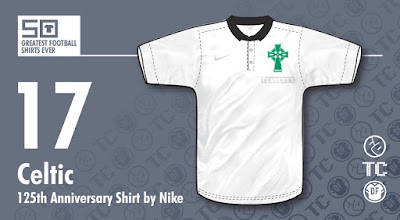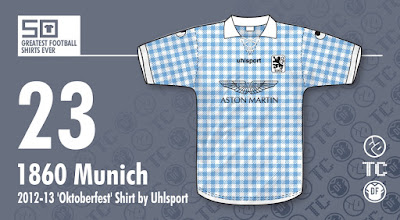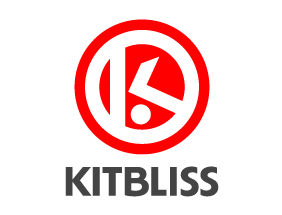Once again, ladies and gents, you're in for a treat as we welcome back Dave Burin to give you a review of a VHS tape aimed mainly at nostalgic Man United fans...
"What a goal from Clayton Blackmore. He loves it, and so do the crowd!"
All these years later, I still love the famously oversexed full back's rocket of a strike, at a hostile Elland Road It's been a shade over 23 years since this VHS first hit the shelves, just after the end of a season where triumph and despair mingled together uneasily amidst the rubble of the old Stretford End, pulled down after a final day victory in a 3-1 dead rubber tie against Tottenham Hotspur.
Whilst Manchester United's
Class of '92 embodied a freak of nature, a youth side compiled of numerous future Premier League stars, its story was almost timeless. The gaggle of Giggs, Beckham, Gary Neville and even Robbie Savage, would have made headlines in 1965 or 2015 for the abundance of natural talent on display. But the story of that season's first team and the backdrop to their matches feels more definite. It feels more
1992 than the Class of '92's story. It's become a common cliché, but there's relevance to the argument that this was the last year of
old football - depending on who you ask, perhaps, 'proper football'.
With the hindsight of time, and the club's enormous success in the intervening 23 years, watching through the build-up to our most infamous title collapse feels more like an exercise in nostalgia than an act of self-masochism. The title cards for each game mix brightly coloured scrapbook animation with short glimpses of the action to come, like some ill-advised crossover between
The Big Match and
Saved by the Bell.
With the distance of time, what seemed standard then, now seems lovably quaint. Sheffield United were sponsored by Laver, a timber company, because financial corporations and loan companies were simply not manly enough for Sheffield. During United's away game at Oldham Athletic, Denis Irwin jubilantly celebrates a goal whilst a woman walks along the touchline pushing a trolley which seems to be conveying a large vat of soup. What a time to be alive!
Even the names of certain opposition goalscorers evoke a sense of cosy familiarity - some long forgotten, but instantly conjuring up memories of half time Bovril, obscenely short shorts, Shoot! magazine and any other clichés you'd like to add to that list. Frank McAvennie. Nigel Jemson. Mike Milligan. Even Ian Rush's 'tache feels vaguely historic, a remnant of a time when the giants of the English game cribbed their facial grooming tips from Ron Jeremy. This was also a time before the choreographed monotony of the
synchronised celebration. Steve Bruce flaps his arms like an overly-excitable eagle, after each goal he scores. It's the way things should be.
On that note, I should probably talk a bit about the football - and more specifically, the brand of football United played. Despite the eventual disappointment of the league campaign, there were magic moments. Young Ryan Giggs nets a stunning solo goal in a 3-0 home triumph over Norwich City. The Reds produce a slightly reckless attacking masterclass at Boundary Park, beating Oldham 6-3. A 5-0 trouncing of an admittedly dire Luton Town (see left). Bryan Robson's late, great winner at White Hart Lane. This was a side that embodied excitement and entertainment. Harry Redknapp would have called them "T'riffic".
But, for all their attractive football, neither Man United nor eventual champions Leeds needed to be
that good all of the time. Whilst in the big money, high-pressure Premier League of 2015, serious mistakes are something of a rarity, on the boggy pitches of 1992's First Division, they were alarmingly frequent.
In this one review video alone, Sheffield Wednesday's defenders clatter into each other on the goal line after a terrible backwards pass, and Brian McClair sneaks in to score. A Luton Town defender falls over his feet, leading to a United goal. Spurs stopper Ian Walker kicks the ball about four yards to limply set up a United goal. Peter Schmeichel concedes a few goals by just standing around the box looking slightly bored, as if waiting for a delayed bus to arrive.
It's all interspersed with interviews, of course. These were the dark days before a gurning Jim White held Sky Sports News hostage interviewing surprised players through car windows, and before United's centre backs could post every ridiculous thought they had on Twitter (love you really, Rio!). Bryan Robson is interviewed in what appears to be his living room. A reflective Alex Ferguson talks with a surprisingly resigned sadness about the season past. "We're not looking for excuses" he says, with a shrug of the shoulders.
The last jubilant moments take place at Bramall Lane and Wembley. The away victory against The Blades is a moment of pure, joyous early '90s emotion. The screen is awash in slightly fuzzy figures leaping over the terracing barriers, a unified mass of oversized padded jackets, technicolour shellsuits and uniform bowl cuts. No hipster combovers here.
The footage in the build-up to the Rumbelows Cup Final is perhaps the most interesting feature of all. It's a document of how much everything has changed. Club officials eating a fried breakfast on the train with eager young lads in face paint and carrying homemade flags and banners. Workers at Manchester's Victoria station wearing red rosettes reading 'Good Luck United!' It feels like another world to the football where Manchester City spend £49 million on an unspectacular player and parade him in front of a stage-managed set of 'fans'.

United win the Final 1-0 against Nottingham Forest. The trophy is presented by the 'Rumbelows Employee of the Year' - because apparently selling lots of computer keyboards translates into getting to give Steve Bruce a trophy. Anyway, it's a nice touch. Paul Ince is wearing a bucket hat. Peter Schmeichel is wearing a fez and throwing the kit man into a full bath in the dressing room. By this point I'm trying not to think too hard about the football - because I know what's coming next.
Even now, the last 10 minutes of this VHS review feel akin to the culmination of a shlocky but especially grisly horror movie. The fun part is over. Something horrific is about to happen, and though part of you wants to avoid it, you continue watching - compelled - knowing that the smiling faces will turn to masks of despair. United lose twice to Nottingham Forest. They lose at West Ham. Some pretentious git named Cantona keeps scoring for Leeds, and they go on to lift the title. It's all rather grim.
Alex Ferguson flashes back onto the screen, immaculate in jacket and tie. "The demands... of everyone means you have to win titles," he says meaningfully. Over the following two decades, those demands would be met and surpassed with incredible regularity. Even in 1993, though, winning the Premier League would feel somehow
different to winning the First Division. Not better or worse, simply
other.
The moustaches would be trimmed. The acid blue away kit would be retired, and left to the nostalgists and curios. The pitches would improve. Even the season review soundtrack, here a pleasant enough background noise which probably appeared on old PC screensavers, would get an upgrade. The times, they were a changin'.
Even if you're not a Man United fan, we're sure you'll agree that Dave's reminder of how things were back in the early-'90s was very evocative and a really great read. Thanks Dave!
If you want to catch more of Dave's guest posts at the Attic, you'll find the links below, or if you want to follow him on Twitter, be sure to find Dave at @GoldenVision90.
More from Dave Burin:

































